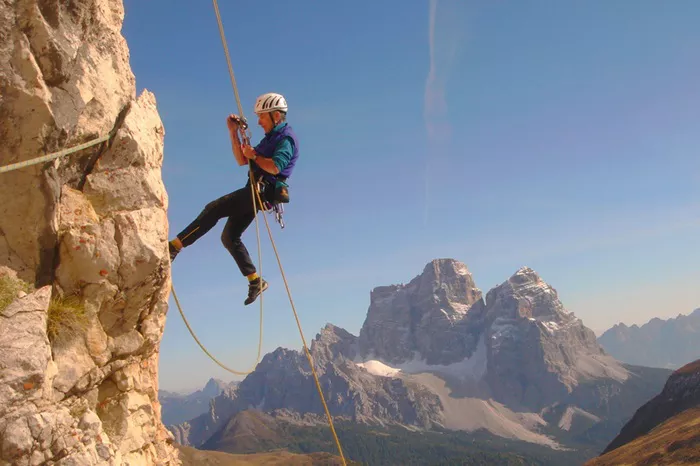Rock climbing is not only a thrilling adventure sport but also a comprehensive workout that engages your entire body. Whether you’re scaling indoor walls or conquering natural rock formations outdoors, the physical demands of rock climbing offer numerous benefits for strength, endurance, flexibility, and mental acuity. This article explores in-depth how rock climbing affects your body and why it’s a beneficial activity for overall fitness and well-being.
1. Muscle Engagement and Development in Rock Climbing
Upper Body Strength
Rock climbing primarily targets the muscles of the upper body, including the forearms, biceps, triceps, shoulders, and back. These muscles are essential for gripping holds, pulling yourself up, and maintaining stability on the wall. Over time, regular climbing sessions can lead to significant gains in upper body strength, improving your ability to tackle more challenging climbs.
Core Stability and Strength
Maintaining balance and control while climbing requires a strong core. The core muscles, including the abdominals, obliques, and lower back muscles, are engaged throughout the climbing process to stabilize your body and assist in movement. Strengthening these muscles not only enhances climbing performance but also improves overall posture and reduces the risk of injuries.
Leg Strength and Endurance
Although often overshadowed by upper body strength, leg muscles play a crucial role in rock climbing, especially during footwork and pushing movements. Climbing builds strength and endurance in the quadriceps, hamstrings, calves, and glutes, supporting sustained efforts and allowing climbers to ascend more efficiently.
2. Cardiovascular Benefits of Rock Climbing
Aerobic and Anaerobic Conditioning
Rock climbing is a unique blend of aerobic and anaerobic exercise. Aerobic endurance is improved through sustained climbs that elevate heart rate and oxygen consumption over extended periods. Anaerobic capacity is developed during intense, short bursts of climbing that rely on stored energy reserves without sufficient oxygen intake. This dual conditioning contributes to overall cardiovascular fitness and stamina.
3. Flexibility and Mobility Improvements
Range of Motion
Rock climbing requires a wide range of motion in joints, particularly in the hips, shoulders, and ankles. Regular climbing sessions help to improve flexibility by stretching and elongating muscles and tendons. Increased flexibility not only enhances climbing performance but also reduces the risk of muscle strains and joint injuries during dynamic movements.
Joint Stability and Mobility
The dynamic nature of climbing promotes joint stability and mobility. As climbers navigate various routes and positions, they strengthen supporting muscles around joints and improve proprioception, the body’s awareness of its position in space. This enhanced joint stability translates to better overall mobility and coordination in daily activities.
4. Mental Benefits and Cognitive Effects of Rock Climbing
Focus and Concentration
Successfully navigating climbing routes requires intense focus and concentration. Climbers must assess terrain, plan movements, and adjust strategy in real time, sharpening cognitive skills such as problem-solving and spatial awareness. The mental challenges of climbing contribute to improved mental acuity and resilience.
Stress Relief and Psychological Well-being
Engaging in physical activity like rock climbing releases endorphins, neurotransmitters that promote feelings of happiness and well-being. Climbing also offers a form of mindfulness, requiring climbers to be present in the moment and fully immersed in their surroundings. This combination of physical exertion and mental focus can reduce stress levels and improve overall mental health.
5. Injury Prevention and Safety Considerations in Rock Climbing
Proper Technique and Form
Learning and practicing proper climbing techniques are essential for injury prevention. Techniques such as using efficient footwork, maintaining three-point contact with the wall, and employing balanced body positioning reduce strain on muscles and joints. Climbing instructors and experienced climbers can provide guidance on technique refinement and safety protocols.
Equipment and Gear Maintenance
Using well-maintained climbing equipment is crucial for safety. Climbing ropes, harnesses, carabiners, and climbing shoes should be regularly inspected for wear and tear. Following manufacturer recommendations for equipment care and replacement ensures reliability and minimizes the risk of equipment failure during climbs.
Warm-up and Cool-down Practices
Before starting a climbing session, warming up with dynamic stretches and light exercises prepares muscles and joints for activity. Cooling down afterward with static stretches helps prevent muscle tightness and promotes recovery. Incorporating these practices into your climbing routine reduces the likelihood of overuse injuries and enhances overall performance.
see also: Mountain Biking VS Road Biking: Which Is Better?
6. Nutrition and Hydration Strategies for Climbers
Fueling Performance
Proper nutrition plays a crucial role in supporting climbing performance and recovery. Consuming a balanced diet rich in carbohydrates, proteins, healthy fats, vitamins, and minerals provides sustained energy for climbs and aids in muscle repair and recovery afterward. Hydration is equally important; maintaining adequate fluid intake helps regulate body temperature and prevent dehydration during exertion.
Pre-climbing and Post-climbing Nutrition
Before climbing, fueling your body with a light meal or snack that includes complex carbohydrates and lean proteins provides lasting energy without causing digestive discomfort. After climbing, consuming a combination of protein and carbohydrates within the first hour facilitates muscle recovery and replenishes glycogen stores. Nutrient-dense foods such as fruits, vegetables, nuts, and whole grains support overall health and performance.
Conclusion: Embracing the Physical and Mental Rewards of Rock Climbing
Rock climbing offers a multifaceted approach to physical fitness and mental well-being, making it a popular choice among enthusiasts of all ages and skill levels. From building strength and endurance to enhancing flexibility and cognitive function, the benefits of rock climbing extend far beyond the thrill of reaching new heights. By incorporating climbing into your fitness regimen and practicing safe climbing practices, you can enjoy a rewarding and transformative experience that strengthens both body and mind. Whether you’re scaling indoor walls or exploring natural landscapes, the journey of rock climbing is as enriching as the summit itself.
related topics:
- How To Get Better At Rock Climbing At Home
- How To Clean Rock Climbing Shoes?
- How To Start Outdoor Rock Climbing

